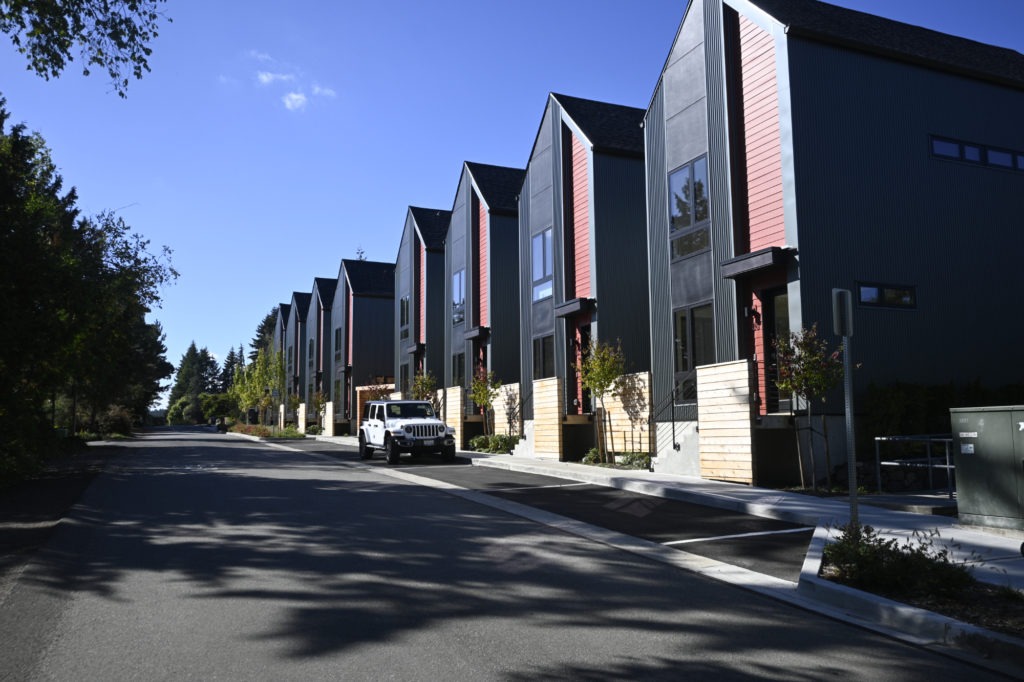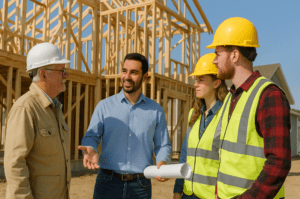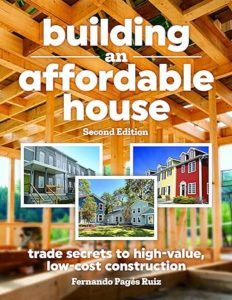After decades at the heart of U.S. housing policy, Sam Rashkin remains restless in his pursuit of the future-ready home. “Some of these conferences start too low,” he said. “We need beginner, intermediate, and advanced tracks. For those of us who’ve been there so many times, there must be a way to deepen the content.”
Rashkin splits his time between Oak Ridge National Laboratory, where he’s completing a roadmap for scaling deep-energy retrofits, and his consultancy, Retooling U.S. Housing. His goal: to make every existing home a future-ready home. “We’ve got to fix the existing housing stock,” he says. “The savings per house are small, but the impact is 80 times greater than new construction.”
Still, he credits progress in new housing. “We’ve had impressive wins—one and a half million homes a year. We just need to reinforce those gains and prevent setbacks.”
Future-Ready Home: Working With Builders Who Listen
Rashkin doesn’t chase national giants. “I work with regional builders like New Tradition Homes in the Northwest, Tim O’Brien Homes in Wisconsin, and the Olson Group in Seal Beach,” he said. These mid-sized builders—producing 400 to 900 homes annually—strike the balance between influence and agility. “That’s where innovation actually happens.”
Crossing the Chasm
As the creator of Energy Star Homes and Zero Energy Ready Home, Rashkin has seen high-performance construction move from the margins to the mainstream. “We did enough things right to cross that chasm,” he said. “It wasn’t genius—just the privilege of making a lot of mistakes until a framework emerged.”
Today, major builders like Beazer, Clayton, KB Home, and Pulte certify all their homes to those standards. The concern: the 45L tax credit—$5,000 for Zero Energy Ready and $2,500 for Energy Star—will expire in July 2026, six years early. “We’ll see a rush of permits before then and a drop-off after. It’s hitting the brakes mid-stride.”
Beyond the Energy Story
When asked how many houses qualify as high-performance, Rashkin is clear: “One hundred percent—if they’re built to the 2015 code or newer. Those are very good homes, provided the code wasn’t gutted and inspectors enforce it.”
He says certification now matters more for quality than energy savings. “Certification gives you adult supervision. It manages moisture, comfort, and air-quality risks. That oversight is worth more than the few kilowatts saved.”
Selling What You Can’t See
In years of “mystery shopping” thousands of model homes, Rashkin found that no one was promoting efficiency. “No one was selling Energy Star. Maybe a third of buyers even knew they were buying it. The logos were hidden behind a plant in the sales office.”
He realized the true emotional appeal was future-readiness. “If you could buy a 2025 car today or a 2028 model that costs less to own, which would you choose? That’s the story. Don’t buy a house that’ll be illegal to build in three years.”
The problem, he says, is cultural. Builders sell what’s visible—kitchens and garages. “Performance is invisible. We’ve trained an industry to sell emotion. Our job is to translate value.”
The Economics of Visibility
“Developers make three to five times more money converting land than building houses,” Rashkin noted. “So they chase land and sell what’s visible. The invisible stuff—air-sealing, balanced ventilation—takes training and storytelling. Most builders haven’t invested in that.”
His Housing 2.0 framework aims to merge design, livability, and performance. “Performance without livability doesn’t sell. We need both.”
From Oversight to Ownership
Rashkin believes programs like Energy Star have done their job. “The industry’s caught up. We don’t need these programs forever. We need codes plus verification—HERS-rater oversight. Energy Star’s value was third-party checks. We can bake that into the market.”
Promise Only What You Can Prove
He warns builders against overselling “healthy homes.” “You can’t promise health or durability. You can promise compliance with the EPA Indoor Air Quality Standard. Say: this home includes 100 percent of the measures recommended by EPA. That’s factual and litigation-proof.”
He compares it to organic labeling. “Farmers promise no pesticides—they don’t promise you won’t get sick. Clear, risk-free claims. Housing needs that discipline.”
Keep It Simple
Rashkin jokes about building-science expert Joe Lstiburek. “Joe makes a living because we choose high-risk assemblies that need his oversight,” he said. “I advocate simple, risk-free solutions. Design it right from the start and you don’t need Joe.”
Simplicity, he insists, is the only way to scale. “If you want volume, design simplicity.”
2035: Factory-Built and Resilient
By 2035, Rashkin expects homes to be manufactured, disaster-ready, and affordable. “When you design for manufacturing from the start, you get efficiency, durability, and cost control together,” he said.
He supports 3-D printing and off-site methods but urges a gradual approach. “Shrink the change. Test one section, learn, then scale.”
The next revolution, he says, won’t come from hero builders. It will come from systems that make good building the default.
Rashkin’s message is simple: design smart, verify everything, and sell the future. “Energy savings alone won’t sell,” he said. “We need to make high performance the obvious, risk-free choice—the 2028 car, not the 2025.”
To learn about designing affordable homes that balance budget, beauty, and sustainability, click here.
Read: Vinyl Siding in Affordable Homes: Durable, Low-Maintenance, and Cost-Effective





